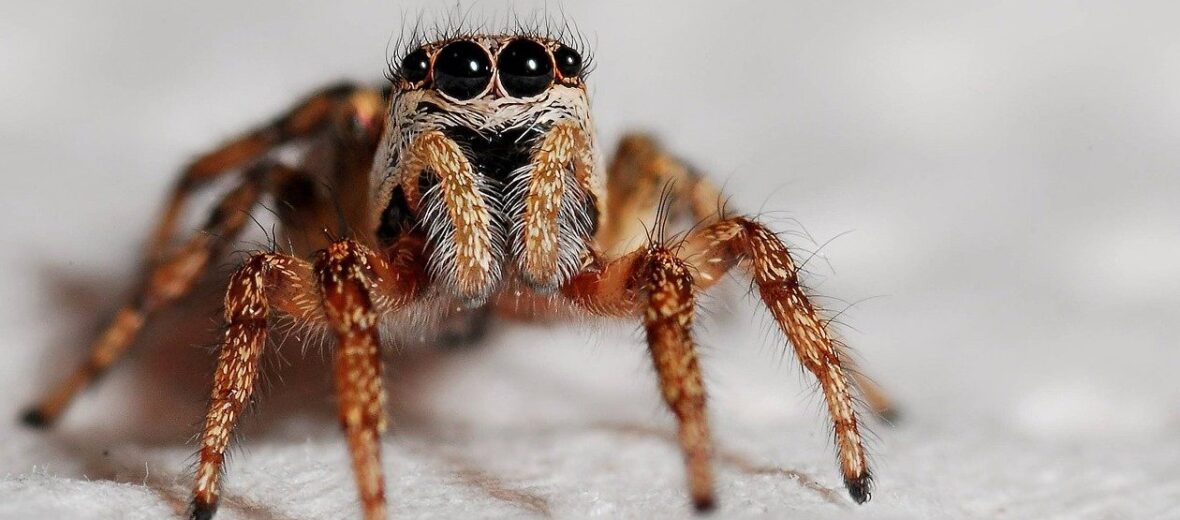
It could be said that many people aren’t a fan of spiders, much less a jumping spider. But these arachnids are really cool and, like all spiders, beneficial. Jumping spiders compose the largest group of spiders on earth. There are over 6,200 known species, to date. They can be found in all types of habitats, all over the world, sans the poles. Not only can they jump well, but they also have amazing vision and crazy, funky fresh dance moves too.
First the Stats…
Scientific name: Salticidae
Length: Up to .98 inch
Lifespan: Up to 1 year
Now on to the Facts!
1.) Jumping spiders depend on the combination of segmented legs and blood flow to make their super jumps. When jumping is required, the spiders cause an rapid change in hemolymph pressure (blood pressure) by contracting the muscles in their bodies. This pushes blood to their legs, and causes their legs to extend very quickly. This rapid extension of their legs is what shoots them into the air and onto their target.
2.) When they make that harrowing leap of faith the first attach a line of silk to where they’re sitting. That way this drag line will catch them if they fall.
3.) These arachnids don’t use webs to ensnare their prey. They simply ambush them.
4.) One species of jumping spider (Bagheera kiplingi) doesn’t even eat insects, they eat plants.
5.) Evarcha culicivora eats nectar.
But wait, there’s more on the jumping spider!
6.) Phidippus regius is large enough to hunt small amphibians and lizards. These live in the United States.
7.) One thing is certain, for now, none pack enough punch in their bite to be medically significant to humans or larger animals.
Did you know…?
Jumping spiders can leap up to 50 times their body length!
8.) Like many other spiders, they have 8 eyes. But they primarily depend on their 4 forward-facing eyes to lock in on their target.
9.) These forward-facing eyes also have swiveling retinas that allow them to see without always having to turn themselves around.
10.) Due to the hairs on their bodies, they can sense the slightest vibrations.
But wait, there’s still more on the jumping spider!
11.) Male jumping spiders perform elaborate dance moves to woo a prospective mate.
Did you know…?
The jumping spider depends on bimodal breathing (using both a tracheal system and book lungs).
12.) They also create sounds like scrapes, clicks, buzzes, and taps to help with the a fore mentioned funky fresh dance moves. These sounds are called rumble rumps.
13.) Jumping spiders are typically diurnal (active during the day).
14.) These little critters can be found in deserts, mountain regions, intertidal zones, scrub lands, temperate forests, urban, and suburban areas.
Now a Short Jumping Spider Video!
Be sure to share & comment below! Also, check out the Critter Science YouTube channel. Videos added frequently!
Want to suggest a critter for me to write about? Let me know here.




Leave a Reply